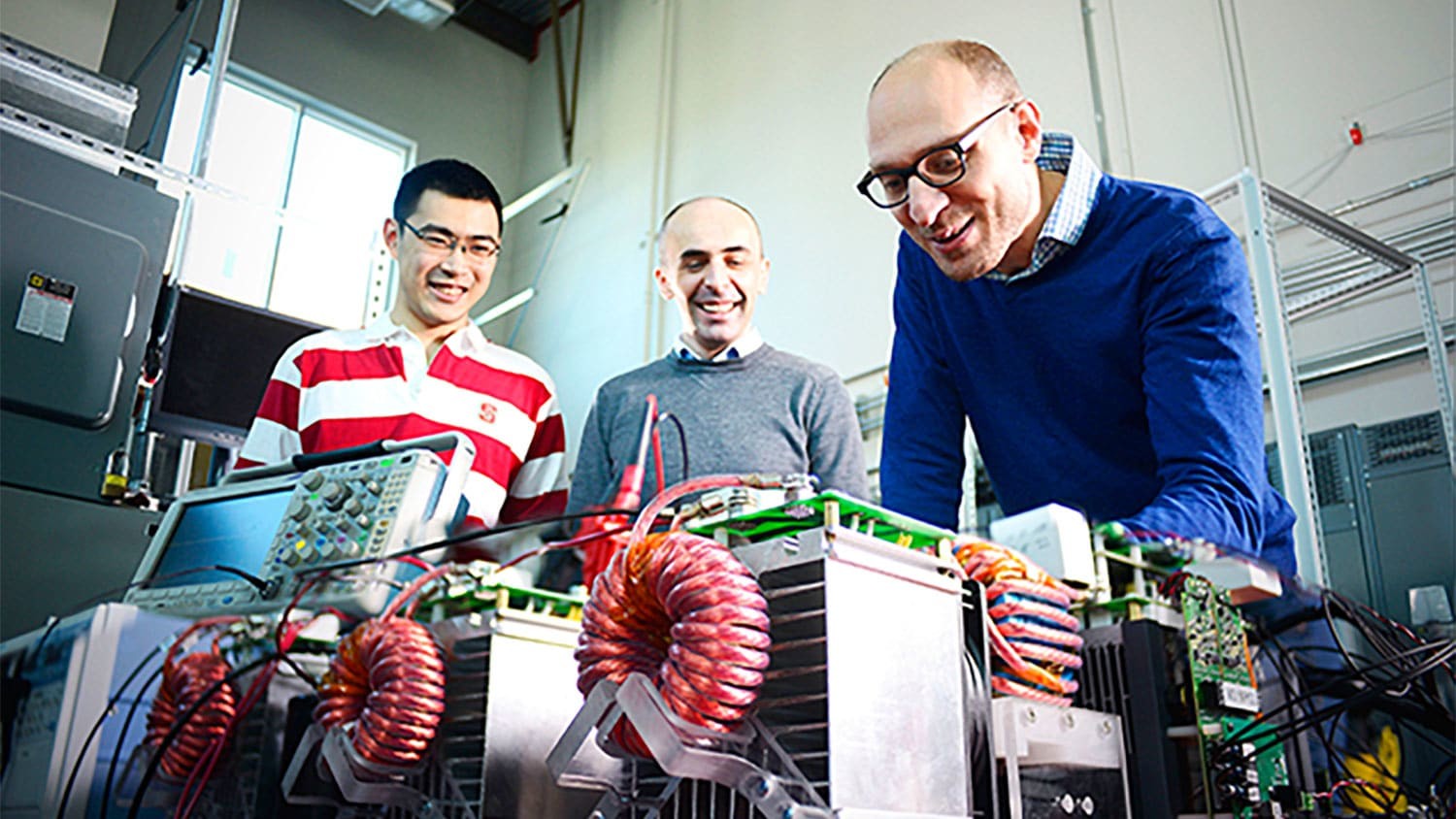
Charging up
Research within Engineering is advancing electric vehicle technology.
May 2, 2019 ![]() Staff
Staff
Last year, the International Energy Agency (IEA) forecast the number of electric vehicles in operation around the world would grow to 125 million by the year 2030 — a monumental leap when you consider that the IEA also reported just over three million electric vehicles on the road in 2017.
To get there, however, will require some improvements in technology. Size, weight and efficiency are all major considerations in today’s electric vehicle market. For example, a larger battery holds more charge but also takes up more space and weighs more. Meanwhile, the charging infrastructure has to be established to support the influx of electric vehicles. At the same time, systems and materials must remain affordable if electric vehicles are to be widely adopted.
That’s where faculty members in the College of Engineering come in. From research involving the materials within lithium ion batteries, which are used to power electric vehicles, to the development of a smaller, faster charger, faculty members are working to ensure wider adoption of electric vehicles will be possible in the future.
“The electric vehicle has been in development for many, many years, but from the performance and cost point of view, we do have significant room to improve,” said Dr. Wensong Yu, associate research professor. “The projects we do here can make a big impact for the industry.”
Yu, along with Dr. Iqbal Husain, ABB Distinguished Professor, and Dr. Srdjan Lukic, associate professor, are all faculty members in the Department of Electrical and Computer Engineering. In addition, they are part of the Future Renewable Electric Energy Distribution and Management (FREEDM) Systems Center led by the College, which is building a more intelligent power grid that can incorporate renewable energy sources and has a focus on electric vehicles as well. There, Husain serves as director and Lukic as deputy director. The FREEDM team conducts its own research and partners in research, with several projects expected to improve the materials and functionality of electric vehicles. Dr. Srdjan Srdic was also a member of the team until recently as an assistant research professor and was part of the research efforts.
Their research is complemented by the work of Dr. Hsiao-Ying Shadow Huang, associate professor in the Department of Mechanical and Aerospace Engineering and an associate director of the Analytical Instrumentation Facility, who is working on the efficiency and safety of the lithium ion battery.
Safer, higher-capacity batteries
Right now, “range anxiety” is a fear among electric vehicle operators. Most electric vehicles on the road today can travel fewer than 250 miles before they need to charge.
Electric vehicle batteries could be made smaller and hold more charge, but they may not be as safe. Huang’s research examines how to maintain and improve the safety of a lithium battery, while at the same time increasing storage capacity in a smaller battery.
“Battery A may give us 100 miles, while battery B gives us only 30 miles, but battery A may cause a fire because it heats up too fast,” Huang said. “We need to find the balance — a battery that will not cause a fire but also will not take up too much space in the vehicle.”
She uses computational mechanics to couple different factors together, or to single out factors, with the goal of finding an optimal combination. Yet, Huang acknowledges there is still a gap between the computational mechanics and the materials that are available.
“My job here is to predict what would be the best combination,” she said.
“However, it probably couldn’t be achieved at this time — there are limitations in the available materials.”
By doing the research now, however, Huang said the data will be available as materials available today are refined and improved, meaning her ideas can be executed in the future.
A smaller, more efficient charger
Working together, the researchers at the FREEDM Center have developed a medium voltage fast charger (MVFC) that, in comparison to existing electric vehicle chargers, is cheaper to install, cheaper to operate, modular and scalable, Srdic said. It is 10 times smaller than existing systems and wastes 60 percent less power during the charging process.
While this current version of the MVFC charges at the same speed as existing charging stations, the researchers are in the process of developing a next-generation MVFC that will be capable of charging more vehicles and charging them more quickly.
The long-term benefits to electric vehicle owners and charging station operators are numerous, Lukic said. Faster charging means more opportunity to take the electric vehicle on long road trips. Currently, a battery can take six to seven hours to charge, and drivers sometimes can’t wait that long if they’re on their way to a destination, Lukic said. There will be cost savings, and charging stations will also require a smaller footprint, meaning they can be offered in more places, he said.
“It’s cheaper to install and run, because it’s more efficient,” Lukic said.
Improving vehicle range
Meanwhile, the work of Husain and Yu shows promise in improving electric vehicle efficiency and range.
In electric vehicles, a battery serves as the power source and operates at a certain voltage — usually around 400 volts. From the battery, a power electronics inverter is used to convey energy to the motor while the vehicle is in operation, Husain said.
Where silicon is traditionally the material used in these inverters, researchers at NC State explored the use of silicon carbide instead and found that it resulted in lower energy losses and better efficiency — 99 percent efficiency to be exact, Husain said. What’s more, this result was also achieved in a much smaller footprint and with less weight. Measuring the efficiency and the power density of this and other components in an electric vehicle is similar to gas mileage in a traditional vehicle.
“Ultimately, this translates to how many more miles it can go on a given battery charge,” Husain said. “One problem with the electric vehicle is that customers have range anxiety, so anything that can be done to improve that is our goal.”
Return to contents or download the Spring/Summer 2019 NC State Engineering magazine (PDF, 13.7MB).



